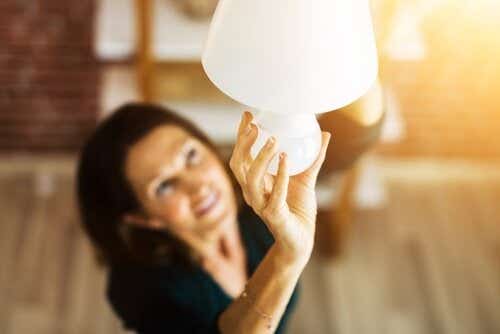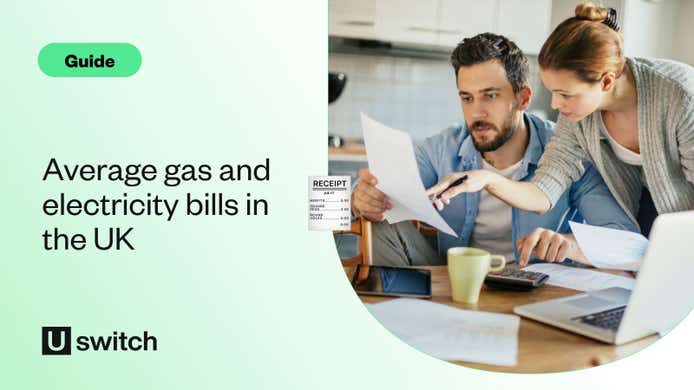How have lightbulbs changed?
Having first been employed extensively in the late 1870s on both sides of the Atlantic, it was inevitable that lightbulbs would be improved upon. The merger of Thomas Edison and Joseph Swan’s competing companies in 1883 created the first mass lightbulb manufacturer, but the incandescent bulbs they made at the time are now largely obsolete. This is due to newer materials that were unavailable at the time, combined with newer technologies and greater understanding of the physics involved. The alternatives we have now are cheaper, brighter and longer-lasting than the bulbs that lit up buildings 140 years ago.
LED lighting
What types of energy-efficient lightbulb are there?
The main type of energy-efficient lightbulb used in the UK is the LED (light-emitting diode). It has largely replaced the inefficient halogen and incandescent designs that were formerly the most common types of bulb, and is significantly causing the phase-out of CFLs (compact fluorescent lamps) which were the first energy-efficient bulbs on the market.
Will energy-saving lightbulbs really save me money?
Yes. One of the key reasons why more people haven't switched to energy-efficient lighting is because they see them as more expensive. Often people base this assessment on the purchase price only, rather than the whole-life cost of a lightbulb. Halogen and incandescent bulbs have to be replaced much more often, and they use five times the electricity of low-energy lightbulbs, which means they actually work out to be very expensive.
As LEDs have become more popular, the costs have come down significantly. At around £3 or less for good quality versions of common bulb types, they soon pay for themselves. According to the Energy Saving Trust, savings will be at least £4 a year per bulb, so it's easy to see how the upfront cost can be recovered within a few months.
Do low energy lightbulbs really make a difference to the environment?
Yes, because they use less energy than incandescent bulbs. A lot of the energy that incandescent bulbs use ends up being wasted as heat rather than light, but not so much heat that you can benefit from it. Not only does an LED bulb use less energy, but a much greater proportion goes into light being emitted rather than heat.
Additionally, if they use less energy, this dramatically decreases demand from power plants and therefore lessens greenhouse gas emissions. Their longer lifespan means they won’t end up as landfill as readily as bulbs that last for significantly less time, as they can be recycled easily at a normal recycling station. Finally, in theory, fewer materials are needed to create the bulbs because fewer are needed, though this is obviously difficult to substantiate.
Linear fluorescent lighting
Does linear fluorescent lighting use a lot of energy?
Linear fluorescent lamps are a source of efficient and effective lighting in homes and industrial spaces - they're not often found in homes apart from potentially in workspaces like kitchens and garages. They're efficient and quick to light up but emit a harsher light that you don't want in most areas of the home, so they're not used that often.
How long does linear fluorescent lighting last?
Fluorescent tubes do have a limited life, although this will be several years. If there are signs of flicker, or a tube looks as though it has failed, it is worth checking if you need a replacement 'starter' before you consider replacing the tube. A starter is a small cylinder with two small T-shaped pins protruding from one end. It is mounted in a socket on the side of the lamp housing - it may not be immediately obvious, as it does not protrude much, and its end surface is only about the size of a penny. Starters only cost a couple of pounds and it is always worth keeping a spare one.
Halogen and incandescent bulbs
Why do halogen lightbulbs use so much energy?
Halogen lightbulbs are more efficient than incandescent lightbulbs on a like-for-like basis. But, unfortunately, this is often cancelled out because people use more of them. There has been a trend to place a number of halogen lights in a row along a ceiling, partly for design reasons, but also because of the directionality of the light produced, several lights are normally required. The overall energy consumption can therefore be greater, even though a typical halogen bulb might have a maximum power of 40 watts compared to a 60 or 100-watt incandescent, with the result that your electricity bills may be higher if you have halogen lighting.
What types of halogen bulb are there?
Halogen bulbs tend to come in two types.
There are low voltage (but not low energy) bulbs recessed into ceilings and walls. These are usually MR16 bulbs. These have a hidden transformer, stepping down from mains 230 voltage to the 12 volts of the bulbs; they are 'reflectors', giving directional light.
There are also halogen bulbs that are put in open mounts, typically GU10 mounts, and these are normally found in kitchens, on spotlight ceiling bars, or ceiling plates. Although popular, they are not necessarily the most practical, as they cast shadows and generate a lot of heat. However, it is possible to buy compact fluorescent bulbs to replace them, giving a more energy-efficient and less directional light, which is more practical. You can also fit LED replacements, although these are generally more expensive and do not cast as good a light as compact fluorescent bulbs.
The G9 variety of halogen bulbs, which are very small, are often used in decorative light fittings. There are now LED energy-efficient alternatives for these, which although they cost more initially, they save on energy and last a lot longer, making them cheaper in the long run.
How does the life of a halogen bulb compare with an LED?
Halogen bulbs typically have a 2,000 hour (or two-year) life, only a fraction of the life of a compact fluorescent bulb, which typically lasts 6-15 years (or 6,000 to 15,000 hours).
If you can't replace your halogen lighting, then it is best to make use of free-standing lighting fitted with energy-efficient bulbs as much as possible.
Compact fluorescent lightbulbs
What types of compact fluorescent lightbulb can I buy?
CFLs are now available in a wide variety of powers, mounts (caps) and shapes. Reflector bulbs, for spot lamp applications, are also now commonly available. The caps that low energy bulbs are available in include bayonet (BC or B22), small bayonet (SBC or B15), standard Edison screw (ES or E27), small Edison screw (SES or E14), and GU-10 (to replace many non-recessed kitchen halogen bulbs). However, they are not available to replace 'low voltage' halogen lights, as used in housings recessed into ceilings.
Compact fluorescent bulbs come in a variety of shapes, including uncovered, covered and reflector types. Uncovered shapes include curly (or spiral) and the very common stick varieties. Covered shapes include the conventional pear-shaped (or 'GLS'), golf ball, globe, and candle. Covered shapes tend to have greater physical strength, as the fluorescent tube itself is hidden behind a layer of stronger glass. However, this reduces their energy efficiency a little, sometimes being B rather than A-rated (for comparison, incandescent bulbs are G-rated).
How long do compact fluorescent lightbulbs take to light up?
One reason for people's reluctance to use low-energy bulbs is because of their experiences with early models. These took longer to light up to their full brightness, and they cast a very white light, which wasn't to everyone's taste, plus they were also bulky. But all these issues have been addressed.
CFLs vary in their 'colour temperature', which is expressed in degrees Kelvin (K). Higher temperatures mean whiter light, cooler temperatures mean yellower light. People's tastes vary regarding colour temperature, some finding the more yellowish colours warmer and more welcoming. Some low-energy bulbs have a colour temperature which is 'daylight balanced', and this is thought to help people who suffer from seasonal affective disorder (SAD), also known as winter depression, which is due to lack of daylight in winter.
The reality is that CFLs have moved on considerably since they were first introduced, and they now offer a range of lighting options.
Can I use dimmer and timer switches with compact fluorescent lamps?
Instructions for some time switches and light-sensitive switches sometimes allege that compact fluorescent lightbulbs can't be used with them. In most instances, this isn't the case.
This advice may have arisen because some early CFLs took a long time to light up, which may have disrupted any light-sensitive circuitry in the switching device. The best way to find out is to experiment, to make sure the switches will work.
Key indicators of incompatibility will be buzzing from the device or the bulb, and the bulb failing to light up properly.
Dimmable CFLs are available, but these tend to be quite expensive. The only other alternative would be to replace dimmer switches with conventional ones.
How can I use my low energy lightbulbs efficiently?
While investing in energy-efficient lightbulbs is a great first step, there are various ways in which you can make sure you’re using your lights efficiently when they’re on.
Make sure you turn the lights off when you leave the room, unless you’re coming back
Only turn on the lights you need - for example, you probably don’t need to have both the overhead lights and the lamps on
Put external lights on a timer or a motion sensor, so they’re only on when they’re needed.
Ultimately, lightbulbs are only one step towards ensuring that your life is as energy-efficient as possible - there are a huge number of things you can do to save energy in all areas of your life, as you can see here. However, when you consider the ease with which you can switch your poorly performing lightbulbs for long-lasting, energy-efficient options and the overall effect they’ll have on your bill, this is by far the best (and quickest) place for you to start.
Lighting: seven top tips to save on your energy bills
Only turn the lights on if you have to. Daylight is the most energy-efficient form of light.
Turn off lights when you leave a room, unless you are going back within a few minutes.
Choose LEDs where possible.
Avoid installing halogen lighting, especially the low voltage types which go in recessed fittings in ceilings and walls.
Install low-energy bulbs with the correct light output - to match the output you had with traditional lighting, simply divide by five to calculate the low-energy equivalent.
Use side lights with low-energy bulbs installed in them if you are stuck with fixed halogen lights that are difficult to replace.
Start to think of lightbulbs as one-off purchases that last many years, like a lamp itself, rather than something you simply throw away after a short time.



